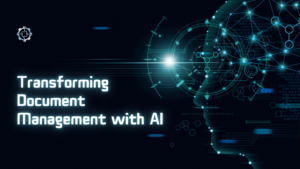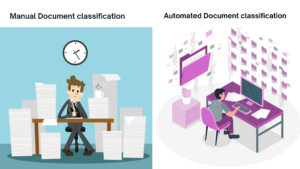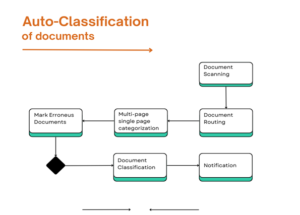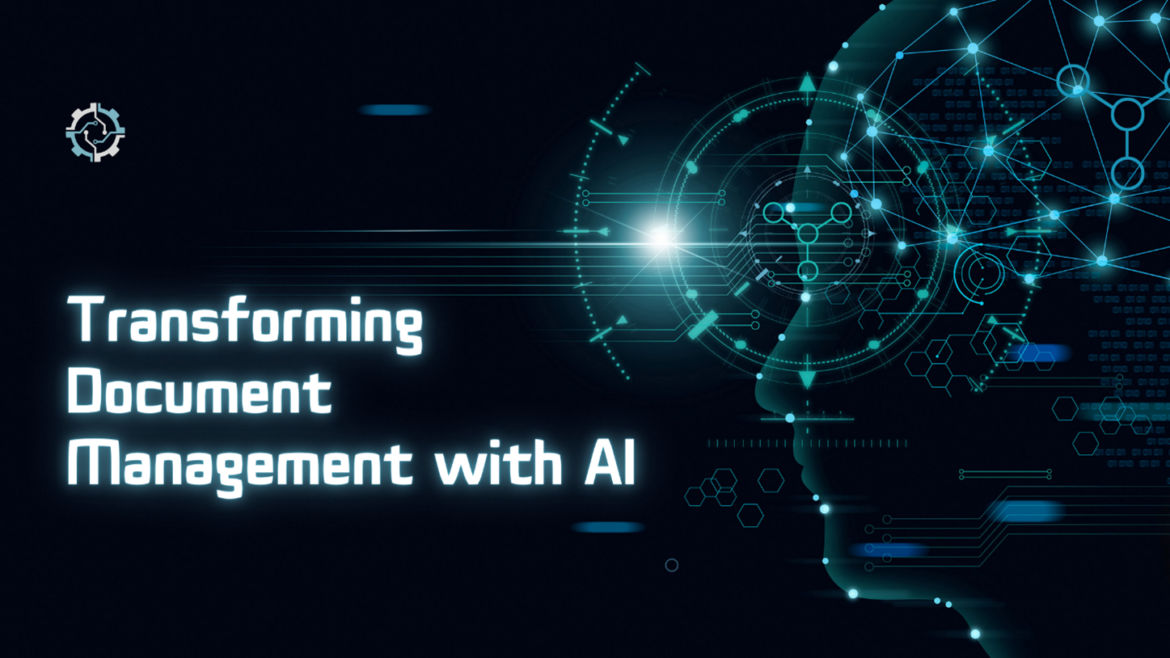In today’s digital age, businesses generate and handle vast amounts of data and documents daily. Managing these documents efficiently can be a daunting task. Enter the Document Management System (DMS) – a tool designed to streamline the management, storage, and retrieval of documents. However, with the integration of Artificial Intelligence (AI), DMS is evolving into an even more powerful asset

Ngxp Technologies-Transforming Document Management with AI: The Future is Here
Let’s explore how AI is revolutionizing document management and the key features it brings to the table.
1. Classification of Documents Automatically
Document classification and sorting by hand can be susceptible to mistakes and time-consuming. AI steps in and automates this procedure with incredible accuracy. A DMS is able to examine each document’s content and categorize it based on machine learning techniques. AI makes sure that every document, whether it be an internal message, contract, or invoice, is filed in the appropriate category, saving time and lowering the possibility of misplacing it.
There are essentially two approaches that to classify and categorize documents: –
1.Manual Classification
2.Automated Classification
The majority of businesses use the manual classification method in their operations. While larger firms may outsource their document processing, smaller organizations with a smaller volume of documents in their queue may handle it internally. Although it takes a long time, manual classification is expensive, ineffective, and prone to errors.

Ngxp Technologies-Classification Of Documents
There are two deadly limitations to the classification of manual documents:
1.Overly long processing time: Sorting through and organizing a large volume of papers might take a long time.
2.Subjectivity: When classifying documents, humans’ prejudices and varying perspectives on reality can impair their judgment, resulting in erroneous and subjective classification.An employee must spend roughly 20–40% of their time manually locating documents and another 50–60% of their time searching for information.
However, you can reduce the overall costs associated with a traditional document processing workflow by automating the data capture, document routing, and manual classification process utilizing document processing technologies
Auto-classification of documents
Automatic document classification is a faster and more accurate alternative to manual classification. Documents are recognized, categorized, sorted, divided, assembled, and processed according to their document type as they are ingested into an IDP system. This allows you to:

Ngxptechnologies-Automatic document classification is a faster and more accurate alternative to manual classification.
•Scan papers without putting separator pages in or arranging them beforehand.
•Documents should be automatically sent to the relevant department based on their content.
•Documents with one or more pages can be automatically categorized.
•Any document with missing or incorrect pages should be marked.
•Verify appropriate batch document scanning automatically.
•Assign confidential materials to the appropriate team member
2. Skillful Search
It can be similar to trying to discover a needle in a haystack while searching a large repository for a certain document. By integrating Natural Language Processing (NLP), AI improves a DMS’s search capabilities. This implies that people are able to conduct searches using natural language questions, and the system is able to comprehend the purpose and context of those queries. Semantic search features also allow the system to find documents by content relevance and meaning rather than merely matching keywords. This results in a quicker and more user-friendly search procedure.
3.Character Recognition Optical (OCR)
A lot of businesses continue to maintain paper records, which should be digitalized to make management simpler. Optical Character Recognition (OCR) technology, driven by artificial intelligence, converts scanned documents and photos into text that can be edited and searched. In addition to improving accessibility, this allows for more sophisticated features like data mining and content extraction. Every piece of information in a document may be searched and used thanks to OCR, greatly increasing productivity.
4.Automatic Labeling of Metadata
Document retrieval and organization depend heavily on metadata. It might be time-consuming to manually tag each page with pertinent metadata. AI makes this easier by automatically categorizing documents according to their content. A contract, for example, could have metadata tags like “legal,” “contract,” and “client name.” Searchability and organization are enhanced by this automation, which guarantees accuracy and consistency in metadata.
5. Version Control and Monitoring of Documents
For the sake of accuracy and accountability, it is essential to keep track of document versions and modifications. Because AI can automatically track changes and keep track of past revisions, it can help with version control. Additionally, it can notify users of any differences or possible conflicts between various versions. This functionality is very helpful in group settings when several people may be working on the same document.
6. Predictive Analytics and Insights
AI can analyze document usage patterns and provide predictive insights. For example, it can identify which types of documents are accessed most frequently and suggest improvements in document management practices. Predictive analytics can also help in identifying potential compliance risks by flagging documents that might be missing necessary information or not adhering to regulatory standards.
7. Enhanced Security and Compliance
Security is paramount when it comes to document management. AI can enhance security by detecting unusual access patterns and potential security breaches. It can also assist in compliance by ensuring that documents meet regulatory requirements. For instance, AI can automatically flag documents that contain sensitive information and ensure they are stored and handled according to compliance standards.
Tools and technologies for transforming document management with AI:
1.OCR Tools
Tesseract
ABBYY FineReader
2.NLP Libraries
spaCy
NLTK (Natural Language Toolkit)
3.Machine Learning Frameworks
scikit-learn
TensorFlow
4.Document Management Systems (DMS)
SharePoint
Alfresco
5.Workflow Management Tools
Jira
Asana
6.Additional AI and Automation Tools
UiPath (RPA)
Automation Anywhere (RPA)
conclusion
The way businesses handle their papers is changing as a result of AI’s integration with document management systems. A plethora of tools that improve productivity, accuracy, and security are available with AI-powered DMS, ranging from OCR and predictive analytics to automatic classification and intelligent search. We can anticipate increasingly more sophisticated capabilities from AI as it develops, which will further improve document management procedures and free up organizations to concentrate on their core competencies.

